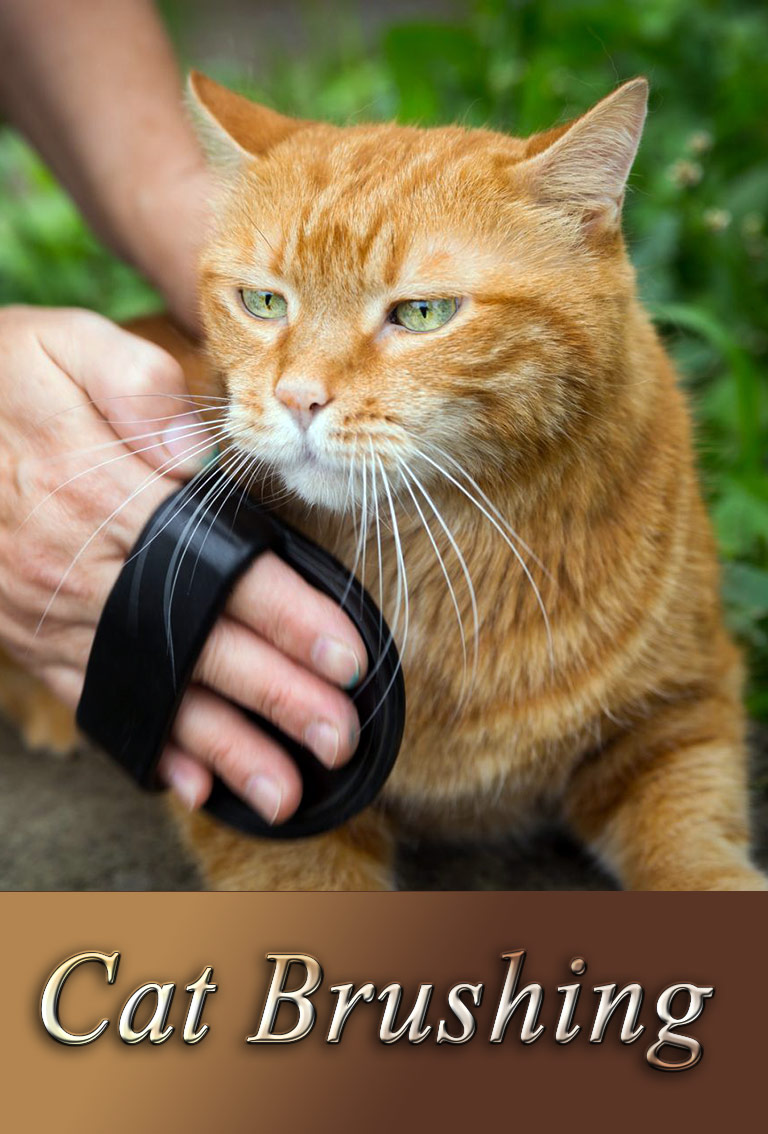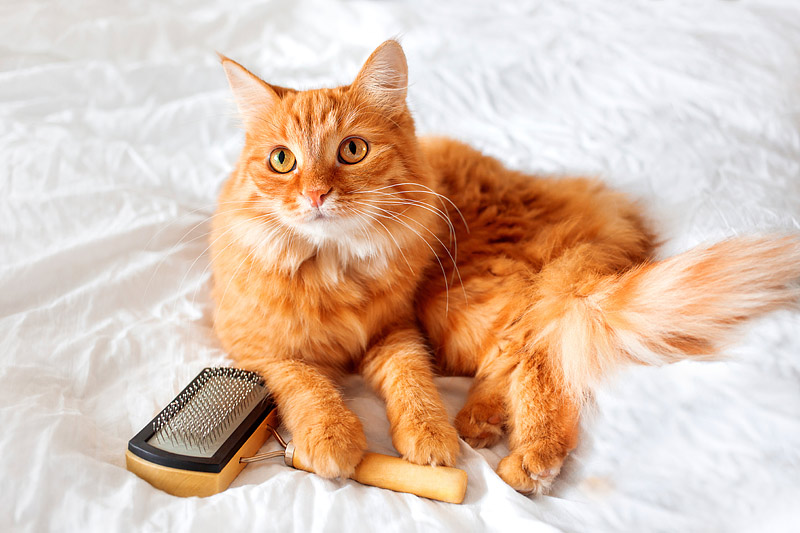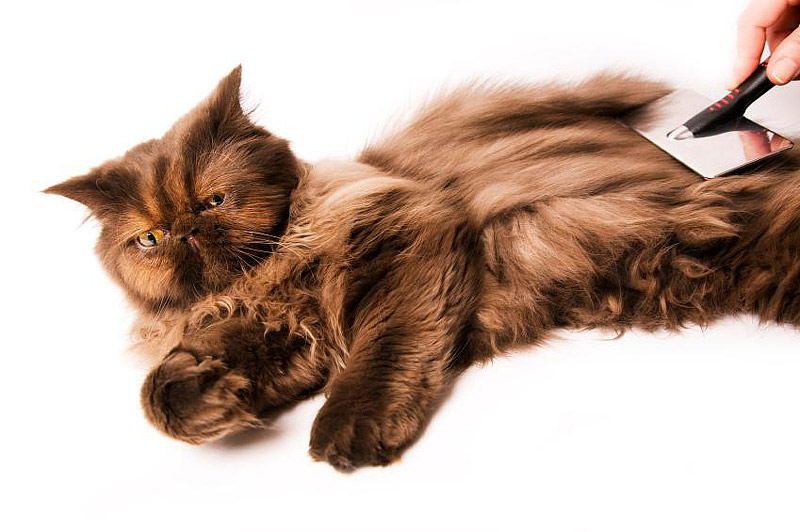
Do you brush your cat regularly? Many people don’t, because they assume their fastidious feline, who constantly self-grooms, doesn’t need any help in that department.
But the truth is, there are many benefits to brushing your cat either daily or several times a week – not the least of which is you’re spending one-on-one time with a furry family member who might not otherwise get much hands-on attention.
In addition, brushing not only helps keep kitty’s coat in good shape, it’s also a great way for you to check for fleas or flea dirt (flea poop), ticks, lumps and bumps, and skin sores or wounds. Brushing is also helpful in reducing or eliminating hairballs, especially in long-haired cats.
How Often Does My Cat Need to Be Brushed?
The amount of brushing your kitty’s coat needs depends on the type and texture of the fur, as well as your pet’s age, lifestyle and health status. For example:
- Some long coats never develop so much as a tangle, while others become matted overnight. Generally speaking, the softer and silkier the coat, the more upkeep it requires.
- Older cats may lose interest in grooming themselves, especially if they are experiencing age-related cognitive decline (kitty dementia).
- Overweight kitties often have a difficult time grooming the back half of their bodies, including the area right under the tail where bits of poop and litter can cling to their coat.
- Cats with “pushed in” faces, known as brachycephalic breeds (Persians and Himalayans, for example), often need the area around their eyes cleaned to prevent tear staining and infections in the folds of the skin.
Especially if your cat is long-haired, it’s a good idea to prepare to spend some time helping her with grooming chores. Your kitty’s coat may only need some TLC once a month – or you may need to tend to it daily to keep your cat looking and feeling good.

Fortunately, many kitties absolutely love being brushed or combed, and many who are initially hesitant can learn to enjoy the process as well.
5 Tips for Positive Cat Brushing Sessions
Like all things feline-related, there’s a right and a wrong way to brush your cat. Fortunately, Dr. Jane Brunt, writing for dvm360, has put together an excellent tool for making kitty-brushing sessions fun and constructive.
1. Choose the right location
It’s really important to brush your cat in a location where she feels safe and comfortable, and on a surface that is stable. Obviously the sturdiest surface is the floor (and kitty’s down there most of the time anyway).
If you’re not able to sit or kneel on the floor, the next best option might be a bed or couch, which you’ll probably want to drape with an old sheet or towel before you start.
2. Choose the right tools
Suggestions:
- Slicker brush (a brush with many tiny metal bristles)
- A soft, natural bristled brush
- Feline facial pheromone spray (e.g., Feliway)
- Flea comb
A slicker brush is usually the best tool for getting through the coat, but your cat may prefer the sensation of another type of brush (a soft bristle or rubber brush, for example) or even a comb. Some people use both a slicker brush and a second brush or comb, alternating between the two.
Typically, your cat will move a short distance away when he’s had enough of one brush, which is a good time to switch to the second brush. Don’t forget to clean the hair from the brushes frequently during each grooming session – you don’t want to transfer dead fur or debris back to your cat.

Many cats find feline facial pheromone spray (e.g., Feliway) very soothing, so you might consider spraying kitty’s brushes with it about 30 minutes before grooming sessions.
If fleas are a problem, comb your cat with a flea comb at least once a day, every day during pest season. Do your flea combing on a white towel or other light colored cloth so you can see what’s coming off kitty’s coat and skin as you comb.
Flea dirt (actually flea feces) looks like real dirt, but when suspended in a little rubbing alcohol or water, it will dissolve and release a red color (blood) allowing you to discern real dirt from flea dirt.
Drop the combings into a bowl or other container of soapy water and flush it down the toilet when your combing session is over.
3. Have treats ready
For many kitties, delicious treats are as (or more) important than the right brush. If your cat is one of them, make sure you have treats sitting right next to your grooming tools before you begin.
4. Start slow and brush your cat lightly
If you’re brushing or combing your cat for the first time, schedule grooming sessions at about the same time each day, and if kitty balks at the brush, just offer treats for the first few days without attempting to groom her.
The goal is to teach her to associate the location, the tools, and being brushed with good feelings and yummy treats.
After a few days of treats and petting in the grooming location, hold the brush near her and when kitty approaches it, reward her with a treat. Gradually increase this type of interaction until your cat will allow you to very lightly brush the top of her head.
If your cat is nervous, begin going through the motions of brushing with the non-bristled side of the brush (I call this “ineffective grooming,” but it’s oftentimes necessary to desensitize nervous kitties with sensitive skin). By initially flipping the brush over, you reinforce that this new ritual doesn’t hurt, and comes with goodies.

After a few sessions of very gentle head brushing, try running the brush very lightly down her neck and to other areas of her body. Be sure to keep the brush in constant steady contact with her to help her feel secure as you groom her. If your cat has old mats it’s best to trim them out before attempting maintenance brushing, as pulling hair will result in an uncooperative kitty, and will decrease the likelihood of cooperation in the future.
If your cat is severely matted, I recommend have a professional groomer shave the mats out, then work on brush desensitization as the hair grows in. Preventing mats from occurring is much easier than trying to brush them out after they’ve occurred.
5. Ease off the treats
Once your cat is comfortable with his daily brushing sessions, and perhaps even enjoying them, you can start decreasing the number of treats you give him. Ideally, you’ll reach a point where you can wait to give him his reward at the end of the session.
However, if he continues to need coaxing to approach the brush or allow you to touch him with it, you’ll need to stick with the treats indefinitely. Be sure to offer only tiny pieces of healthy treats, and factor them into his daily calorie intake to avoid weight gain. Many cats learn to cooperate with regular grooming sessions knowing a treat is coming at the end of a successful session.





Leave a Reply